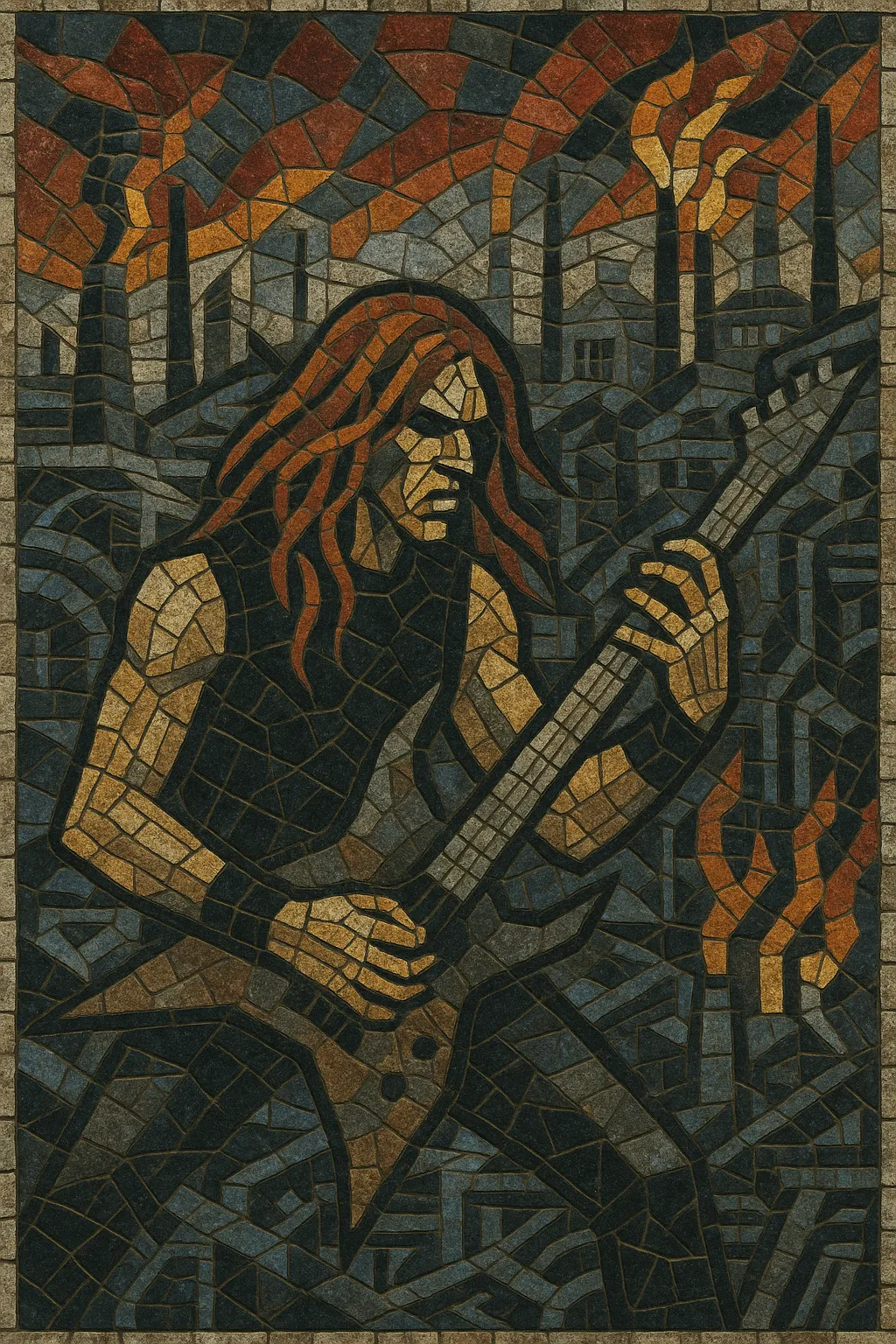
Technical thrash metal is a highly intricate, precision-focused branch of thrash metal that emphasizes complex songwriting, demanding musicianship, and advanced rhythmic and harmonic ideas.
It retains the speed and aggression of classic thrash, but layers in odd time signatures, frequent tempo shifts, syncopated riffing, contrapuntal guitar parts, and harmonically adventurous chord progressions. Bass and drums are foregrounded with independent, virtuosic lines, and guitar work often features rapid alternate picking, string-skipping, sweeping, and chromatic runs.
Lyrically, the style favors cerebral or conceptual themes—technology, dystopia, science fiction, social critique—delivered with clear, assertive vocals ranging from gritty shouts to cleaner, piercing tones.
Technical thrash metal emerged in the mid-1980s as musicians within the thrash scene began pushing beyond straightforward speed and riff-cycling into more complex, progressive territory. Early catalysts included US bands such as Watchtower (whose 1985 and 1989 releases set a template of fusion-informed complexity) and Toxik, alongside European innovators like Coroner (Switzerland) and Mekong Delta (Germany). These groups fused the velocity and bite of thrash with the structural ambition of progressive rock and the rhythmic sophistication of jazz fusion.
By the late ’80s, the style had crystallized. Albums by Coroner (R.I.P., No More Color), Annihilator (Alice in Hell), Forbidden (Twisted into Form), Heathen (Victims of Deception), and Sadus showcased dense arrangements, razor-precise execution, and head-spinning tempo/meter shifts. Canada (Annihilator, Obliveon), Germany (Mekong Delta, Sieges Even), Denmark (Artillery), and the US (Watchtower, Toxik, Believer, Dark Angel’s late-era work) all contributed to a geographically diverse peak.
In the early 1990s, changing market tastes, the rise of groove metal, and the grunge/alternative boom curtailed the style’s commercial momentum. However, its technical vocabulary flowed into adjacent extreme-metal currents. Progressive and technical death metal (e.g., Death’s more progressive phase, Atheist, Cynic) absorbed and extended tech-thrash’s polyrhythms, chromatic harmony, and elevated musicianship.
From the 2000s onward, a revivalist and evolutionary wave—led by acts like Vektor and others embracing sci‑fi aesthetics and hyper-detailed composition—reaffirmed the style’s influence. Today, technical thrash stands as a foundational bridge between classic thrash energy and the precision/complexity associated with progressive and technical extreme metal, continuing to inform modern metal’s rhythmic design, arrangement density, and instrumental prowess.

